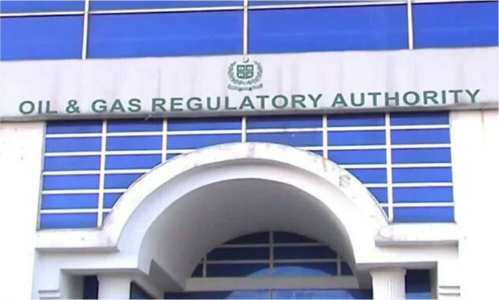ISLAMABAD: Pakistan will be having a mammoth monetary benefit of Rs10-11 trillion in the next 25-30 years time, once the PTI government succeeds to get the Power Purchase Agreements (PPAs), having capacity to generate 22,000 MW of electricity, amended with material changes in consultation with the IPPs.
So far, the government has signed MoUs with 53 IPPs, which will yield dividends of Rs836 billion in the next 10-12 years and if the government further manages to sign MoUs with more IPPs installed under the 2015 power policy, including the ones set up under the CPEC umbrella, then the country will have huge monetary benefit of Rs10-11 trillion in the next 25-30 years time,” claimed Special Assistant to Prime Minister on Power Tabish Gohar in an interview with The News.
During the one-hour-long interview, Gohar touched on almost all issues of power sector starting from MoUs signed with 53 IPPs so far with further intention of the government for inking more agreements with IPPs installed under the power policy 2015, including the ones established under CPEC umbrella on the issue of increasing challenge of capacity payment to IPPs. He also discussed the way forward for turning loss-making DISCOs into profit earning entities to the monster of circular debt that has virtually made the power sector unsustainable.
He too highlighted the bitter facts that four DISCOs that include HESCO, SEPCO, PESCO and QESCO are adding 85 percent line losses that appear in circular debt. As a whole, all DISCOs on account of transmission and distribution losses and less recovery of electricity bills are annually adding Rs150-200 billion to the circular debt. He said if the status quo continues and no endeavors are made to bring down the losses and improve recovery, then circular debt that stands at Rs2.3 trillion will soar up to Rs4,000 billion by 2025.
He said the government has to pay this year Rs900 billion to IPPs, which will increase to Rs1.6 trillion by 2030. Gohar also talked about the IMF demand seeking raise in tariff by about Rs1.50 per unit from January 1, 2020, saying the government has put the increase in tariff on hold for a while. “The government has sensitized the Fund people arguing it is not possible for a country like Pakistan whose economy has suffered during the COVID-19 first wave. Now the second wave of COVID-19 has appeared on the scene and no one knows how long it will last.”
The SAPM on the power sector went on to argue that on the one hand the IMF is asking the US government to introduce the stimulus for impetus in the economy but when it comes to Pakistan, the Fund’s viewpoint is otherwise. “We are in the process of creating the demand for electricity from industrial sector and SMEs, enabling the government to pay capacity charges payment to IPPs and generate economic activities and to this effect the government has reduced the power tariff by 25-50 percent on incremental use of electricity.”
He further maintained: “We have come up with the price signaling for increasing the electricity consumption by the industrial sector but the IMF demand seeking raise in tariff will ruin the government endeavor. And more importantly, the government feels that masses are not in a position to pay more increase in tariff as they are already experiencing a huge increase in power and gas tariff coupled with high inflation in the country.”
However, he explained that Re0.14 per unit is required to increase in the head of quarterly tariff adjustment and over Rs1.25 per unit is needed to be increased in the head annual rebasing in the power tariff from January 2020.
To a question, he said that in Pakistan, the power tariff is already higher by 25 percent if compared with competing economies of India and Bangladesh.
Mentioning about the MOUs inked with 53 IPPs, he said that the government has to clear the dues of Rs425 billion of IPPs before converting MOUs into amended agreements. The dues of Rs425 billion include Rs205 billion as equity, Rs136 billion as energy purchase price and Rs14 billion as late payment surcharge. The IPPs also need to pay Rs130 billion to state owned entities of PSO, Sui Northern and OGDCL, so the amounts of Rs136 billion will be adjusted against the dues of the said government entities. As far as late payment surcharge is concerned, it will be adjusted against the amount that IPPs owe to PSO, OGDCL and Sui Northern in the same head of LPS.
This means, he said, the amount of Rs205 billion is left for which the government is working on a financial instrument, including issuance of Sukuk Bond under which the said amount will be offloaded by the government to IPPs. The government is bound to convert the MOUs into legal form of agreements in six months and to this effect three months have already elapsed as MoUs were signed on August 13, 2020. He said the government will be able to convert the MOUs into amended PPAs in one and a half month’s period.
Under the MoUs signed with 53 IPPs, the government has managed to introduce with the consent of IPPs the material changes in the existing PPAs that will yield reasonable dividends amounting to Rs836 billion in the next 10-12 years.
Gohar further said that profit of GENCOs will be reduced to 10 percent and rate of return of nuclear power plants of 1,000MW will be reduced from 15 percent with dollar indexation to 14.5 percent in rupee indexation. He also said that the profit of nuclear plants K2 and K3 of 2,300 MW will also be brought to 14.5 percent in rupee-term from 15 percent rate of return with dollar indexation. The profits of hydropower projects will also be rationalized accordingly. However, profit of RLNG based power plants will be reduced from 15 to 12pc in dollar indexation.
He said that inefficient GENCOs of 1,750-1,800 MW has been made non-operational and the process by NEPRA to de-license them is underway. And the remaining Gencos of 1,400-1,500 MW will be shut down in the next one to two years.
He said that the biggest challenge for the government comes from the electric power distribution companies which are unable to improve the recovery and bring down the T&D losses that cause more contribution in the circular debt if compared with Genco’s share. He said: “We are facing resistance for reforms in DISCOs from within the system.” He said the time has come to run DISCOs under public-private partnership with stakes of provincial governments in the board of directors.
DISCOs should be given financial autonomy with fully independent boards based on professional people. The boards should select CEOs of their DISCOs with performance targets having powers enough to say no to any interference from political figures and bureaucracy.





